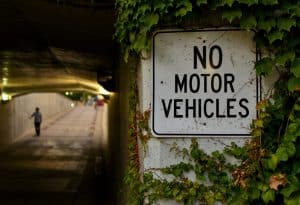Transportation in 2050: Predicting Tomorrow’s Mobility Solutions
As technology continues to advance at an unprecedented rate, it’s no surprise that the way we move from one place to another is also evolving. From cars and buses to trains and planes, the modes of transportation we rely on today may seem drastically different in the year 2050. With increasing concerns about the environment and efficiency, it’s essential to look ahead and predict how our mobility solutions might change in the future. In this article, we’ll explore some potential ways in which transportation in 2050 could be vastly different from what we know now.
The Rise of Electric and Autonomous Vehicles
One of the most significant changes that we’re beginning to see now is the shift towards electric and autonomous vehicles. With the advancements in battery technology and the growing concern for the environment, it’s highly likely that by 2050, electric cars and other modes of transportation will be the norm. This will have a significant impact on reducing carbon emissions and improving air quality in cities around the world.
Moreover, as autonomous vehicles become more prevalent, the need for individual car ownership will decrease, leading to a reduction in traffic congestion and the need for parking spaces. Companies like Google, Tesla, and Uber are already investing in self-driving car technology, and we can expect to see more of it in the coming years.
The Revolution of Hyperloop Technology
The concept of the Hyperloop has been around for a while, and it’s undoubtedly a game-changer in the world of transportation. Imagine a mode of transport that could take you from one city to another at an average speed of 600mph. This futuristic technology, developed by SpaceX and Tesla founder, Elon Musk, could revolutionize the way we travel in 2050.
The Hyperloop operates on the principle of magnetic levitation, with pods traveling in a near-vacuum tube, reducing resistance and allowing higher speeds. This mode of transportation could significantly reduce travel time, making it possible to commute between cities in less than an hour and opening up opportunities for businesses and tourism.
Efficient Public Transportation
Aside from individual modes of transportation, we can also expect significant changes in public transportation in 2050. With the development of smart cities and the internet of things (IoT), public transportation will become more connected and efficient. Real-time data will be used to optimize routes, and the use of electric buses and trains will help reduce carbon emissions.
Additionally, we may see the implementation of high-speed trains, connecting distant cities and countries in record time. China’s Maglev train, currently the fastest in the world, has a top speed of 430km/h, but by 2050, we could see trains reach speeds of up to 700km/h or more.
The Emergence of Flying Cars
While the concept of flying cars may still seem like something out of a sci-fi movie, it may very well become a reality by 2050. Companies like Uber, Boeing, and Airbus are currently working on prototypes of flying cars, and with the advancements in battery technology, these vehicles could become a viable form of transportation in the future.
Flying cars would eliminate the need for roads, mitigating traffic congestion and reducing travel time significantly. However, the development of this technology would also mean proper regulations and safety measures will need to be in place to ensure safe skies.
Conclusion
In conclusion, as we continue to look ahead towards the year 2050, it’s clear that transportation will be vastly different from what we know today. With a strong focus on efficiency, sustainability, and technology, we can expect to see a significant shift in the way we move from one place to another. These changes will not only have a positive impact on the environment but also create new opportunities and reshape the way we live our lives.
While many of these predictions may seem far-fetched, it’s important to remember that technology has always been a driving force for change. And with the rapid pace at which technology is advancing, who knows what other groundbreaking mobility solutions we’ll see in the next 30 years.











